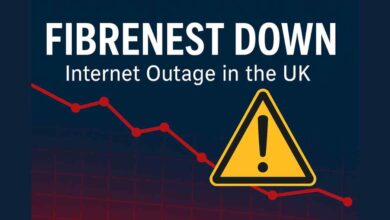Andy Gellenberg: The German Illustrator Redefining Modern Visual Art

Andy Gellenberg is a name that stands out in the world of contemporary illustration and design. A German-based artist, Gellenberg has carved his unique identity through a fusion of bold colours, abstract geometry, and innovative digital techniques. His work transcends traditional illustration by blending emotion, culture, and storytelling into striking visual compositions. Whether designing portraits made entirely of Nike swooshes or crafting layered digital collages, Andy Gellenberg has reshaped the way we perceive modern art and brand identity. His portfolio reveals a seamless balance between creativity and commercial value—an achievement that places him among the most respected illustrators of his generation.
Early Life and Background
Born in 1983 in Germany, Andy Gellenberg developed a love for visual storytelling from an early age. Growing up in a creative environment, he often explored different mediums—from sketching and collage-making to experimenting with early digital tools. His fascination with visual culture eventually led him to pursue Communication Design at Trier University, one of Germany’s most reputable design schools. This academic journey allowed him to refine his technical skills and discover the power of merging traditional art forms with modern design technology.
During his studies, Gellenberg began experimenting with both analogue and digital art. He found inspiration in skateboarding culture, album art, and the expressive works of artists such as Henri Matisse and Jean-Michel Basquiat. These influences shaped his early artistic voice—a voice that later became synonymous with a bold, colourful, and deeply conceptual style.
Rise in the Illustration World
Andy Gellenberg’s breakthrough came when his creative experimentation caught the attention of the wider art and marketing community. One of his most notable early projects was a series of portraits made entirely using the Nike “swoosh” logo. Each portrait captured the energy, motion, and personality of global athletes without ever showing their faces in a conventional way. The concept was simple yet profoundly innovative, and it quickly went viral. This project did not just showcase his technical skill; it demonstrated his ability to connect with global audiences through minimal yet powerful symbolism.
Following this success, Gellenberg started working with international clients who admired his ability to communicate brand identity through illustration. Major companies such as Nike, Volkswagen, Apple, and Netflix sought his expertise to bring fresh perspectives to their visual campaigns. Unlike many commercial illustrators, Gellenberg maintained his artistic authenticity while adapting his work to suit different brands. His style was recognisable, but never repetitive—a hallmark of true artistic mastery.
Artistic Style and Creative Approach
Andy Gellenberg’s style can best be described as a harmonious collision of colour, form, and meaning. He combines hand-crafted collage techniques with precise digital manipulation, producing artworks that feel both organic and futuristic. His use of bold colour palettes, geometric layering, and dynamic compositions gives each piece a sense of rhythm and energy.
A key aspect of his artistic philosophy is storytelling. For Gellenberg, every illustration must evoke an emotion or narrative. Whether it’s a portrait, a product visual, or a conceptual campaign image, he aims to capture the soul of the subject rather than just its appearance. His art is not merely decorative—it communicates ideas about identity, diversity, and culture.
He draws inspiration from pop culture, music, and street art, often referencing the energy of hip-hop and the DIY ethos of urban creativity. This blend of influences makes his work resonate with younger audiences while still appealing to traditional art enthusiasts.
Collaboration with Major Brands
Collaborating with global brands has allowed Andy Gellenberg to take his art to new dimensions. His partnership with Nike, in particular, marked a defining chapter in his career. The swoosh-portrait project demonstrated his ability to think conceptually within brand boundaries while maintaining originality.
His collaboration with Johnnie Walker for a limited-edition Black Label bottle was another example of his innovative approach. The project involved designing an AI-assisted label—a fusion of human creativity and artificial intelligence. It reflected not only his technical versatility but also his willingness to explore the intersection of art and technology.
Gellenberg has also contributed visuals for campaigns by Apple and Volkswagen, each demonstrating how illustration can elevate brand storytelling. His works are often used in digital media, packaging, and editorial layouts—proving that illustration, when executed with creativity and purpose, can be as influential as photography or film.
Influence and Inspirations
Andy Gellenberg’s creative inspirations span across various disciplines. From the cut-paper collages of Henri Matisse to the expressive spontaneity of Jean-Michel Basquiat, his work pays homage to the masters while pushing boundaries of modern design. He also cites his love for skate graphics, streetwear culture, and hip-hop as major sources of motivation. These influences add a raw, youthful energy to his illustrations, making them feel authentic and culturally relevant.
His approach to colour theory reflects a deep understanding of visual psychology. By using vibrant contrasts and unexpected combinations, he draws the viewer’s attention and conveys emotion instantly. Gellenberg often experiments with texture and layering, creating artworks that feel tactile even when viewed digitally.
The Digital and Analogue Balance
One of the most fascinating aspects of Andy Gellenberg’s work is his ability to balance digital precision with human imperfection. In an era where many artists rely heavily on software-generated imagery, Gellenberg still values the tactile process of sketching, cutting, and experimenting manually before moving to digital tools. This hybrid approach ensures that his work retains warmth and authenticity while benefiting from the efficiency of modern design software.
His workflow often begins with pencil sketches or paper collages, which he later refines using digital techniques. This process allows him to retain spontaneity and character—qualities that can be lost in purely computer-generated artwork.
Recognition and Global Reach
Over the years, Andy Gellenberg has built an impressive global following. His works have been featured in exhibitions, design magazines, and digital art platforms. He is also represented by IllustrationX, a leading international agency that showcases world-class illustrators. Through social media, particularly Instagram and Behance, Gellenberg shares behind-the-scenes insights, personal experiments, and commercial projects, allowing fans and aspiring artists to understand his creative process.
His ability to blend commercial success with artistic integrity has made him a role model for young illustrators worldwide. Many art students and professionals study his work to learn how to maintain authenticity while working within commercial frameworks.
Lessons for Designers and Creatives
Andy Gellenberg’s journey offers valuable lessons for designers, marketers, and content creators alike. Firstly, he proves that creativity thrives at the intersection of art and technology. By embracing both analogue and digital methods, artists can create work that feels innovative yet personal. Secondly, his success demonstrates the importance of developing a unique style that is instantly recognisable but still adaptable to client needs.
For content creators and brand strategists, Gellenberg’s portfolio serves as a masterclass in visual storytelling. His ability to communicate complex ideas through simple imagery shows that design is not just about aesthetics but about message and meaning.
Relevance in Today’s Creative Landscape
In today’s fast-paced digital world, where brands compete for visual attention, Andy Gellenberg’s art stands as a refreshing example of authenticity and substance. His work reminds us that creativity should not be dictated by algorithms or trends but by human expression. He has successfully merged the timeless values of fine art with the immediacy of digital culture, creating visuals that engage both emotionally and intellectually.
As brands increasingly seek to connect with audiences through storytelling, illustrators like Gellenberg become essential collaborators. His work bridges the gap between art and marketing, emotion and commerce, analogue and digital. This balance makes his style not only visually appealing but also commercially valuable in modern advertising and digital media.
Future Prospects and Evolving Trends
Looking ahead, Andy Gellenberg continues to evolve as both an artist and designer. The integration of AI, augmented reality, and motion design in illustration is likely to influence his future projects. However, one thing remains constant—his commitment to originality and expression. He continues to inspire a new generation of artists who want to challenge conventions while maintaining creative independence.
As more companies turn to illustration to humanise their brands, artists like Gellenberg are becoming increasingly influential. His portfolio stands as proof that illustration can be both artistic and strategic, emotional and marketable.
Conclusion
Andy Gellenberg’s work embodies the perfect blend of creativity, innovation, and authenticity. From his early experiments with collage and colour to his globally recognised brand collaborations, he has shown that illustration remains a powerful medium of communication in the digital age. His dedication to craft, his balance between analogue and digital techniques, and his unwavering artistic vision have positioned him as one of the most distinctive illustrators of our time.
For creative professionals, his journey serves as a reminder that success comes not from following trends but from shaping them. Andy Gellenberg is more than just an illustrator—he is a storyteller, a visionary, and a bridge between art and modern culture. His legacy continues to inspire artists, designers, and content creators across the world who seek to express ideas with authenticity, emotion, and imagination.



